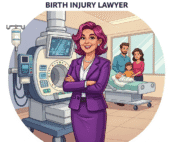Children and adults with Cerebral Palsy (CP) are at an increased risk for developing bone health issues compared to the general population. Factors related to reduced mobility, muscle imbalances, and nutritional challenges can impact bone density and increase the likelihood of fractures. Understanding these risks and implementing proactive strategies for prevention and care are essential for promoting long-term health, mobility, and quality of life for individuals with CP.
This article delves into the common bone health challenges faced by individuals with Cerebral Palsy, explains the underlying causes, highlights the importance of early intervention, and outlines strategies for maintaining strong and healthy bones.
Why Bone Health Matters in Cerebral Palsy
Strong bones are fundamental for support, movement, and protecting vital organs. In individuals with CP, maintaining optimal bone health is particularly important due to:
- Reduced Mobility: Decreased weight-bearing activities can lead to lower bone mineral density, making bones more fragile.
- Muscle Imbalances and Spasticity: Uneven muscle pull can affect bone growth and alignment, increasing the risk of deformities and fractures.
- Nutritional Challenges: Difficulties with feeding, swallowing, or gastrointestinal issues can lead to inadequate intake of essential nutrients for bone health, such as calcium and vitamin D.
- Medications: Some medications commonly used in CP management can have side effects that impact bone density.
- Increased Risk of Falls: Motor impairments and balance issues can increase the likelihood of falls, which can result in fractures.
Common Bone Health Issues in Cerebral Palsy
Individuals with CP are at higher risk for developing several bone health problems, including:
- Osteopenia and Osteoporosis: These conditions are characterized by low bone mineral density, making bones weak and prone to fractures. Osteopenia is a precursor to osteoporosis.
- Fractures: Due to lower bone density and increased risk of falls, fractures are more common in individuals with CP. These can occur even with minor trauma.
- Scoliosis and Spinal Deformities: Muscle imbalances can contribute to the development or progression of spinal curvature, which can impact posture, balance, and potentially breathing.
- Hip Displacement: Muscle imbalances around the hip joint can lead to subluxation (partial dislocation) or full dislocation, which can be painful and affect mobility.
Early Identification and Assessment
Proactive monitoring of bone health is crucial for individuals with CP. Regular assessments may include:
- Clinical Evaluation: Healthcare providers will assess mobility, muscle tone, nutritional intake, and history of fractures.
- Bone Density Scans (DXA Scan): A low-radiation imaging test that measures bone mineral density, typically at the spine and hip.
- Vitamin D Level Testing: Blood tests to check for vitamin D deficiency, which is common in this population.
- Calcium Intake Assessment: Evaluation of dietary calcium intake.
- Radiographs (X-rays): To assess bone alignment, identify fractures, or monitor spinal deformities and hip displacement.
Strategies for Prevention and Care
A comprehensive approach involving lifestyle modifications, medical interventions, and therapies is essential for maintaining bone health in individuals with CP.
Lifestyle Modifications
- Promote Weight-Bearing Activities: Encourage activities that put weight on the bones, such as standing with support, walking (if possible), or using standing frames. Even passive weight-bearing can be beneficial.
- Ensure Adequate Calcium and Vitamin D Intake: Focus on a diet rich in calcium-rich foods (dairy, leafy greens, fortified foods) and ensure sufficient vitamin D through sunlight exposure (with appropriate skin protection) or supplementation as recommended by a healthcare provider.
- Maintain a Healthy Weight: Being underweight or overweight can negatively impact bone health.
- Prevent Falls: Implement safety measures to reduce the risk of falls, such as using assistive devices, modifying the home environment, and addressing balance issues through therapy.
Medical Interventions
- Vitamin D and Calcium Supplementation: Healthcare providers may recommend supplements to ensure adequate intake, especially if dietary intake is insufficient or blood levels are low.
- Bisphosphonates: In some cases of low bone density or recurrent fractures, medications called bisphosphonates may be prescribed to help slow bone loss and increase bone density.
- Management of Spasticity and Muscle Imbalances: Treatments such as botulinum toxin injections, oral medications, or surgery may help improve muscle balance and reduce stress on bones.
- Orthopedic Management: Bracing, casting, or surgery may be necessary to address spinal deformities or hip displacement and prevent further complications.
Therapeutic Interventions
- Physical Therapy: Focuses on strengthening muscles, improving balance and coordination, and promoting safe mobility and weight-bearing activities.
- Occupational Therapy: Addresses activities of daily living, adaptive equipment for mobility and safety, and strategies to prevent falls.
- Hydrotherapy: Water-based exercises can provide a low-impact way to strengthen muscles and improve mobility.
- Regular Exercise Programs: Tailored exercise programs that incorporate strengthening and balance exercises can help improve bone health and reduce the risk of falls.
For more information and support related to the health and well-being of individuals with Cerebral Palsy, including strategies for maintaining bone health, please visit Health and Well-being on CP Family Hope.
Moving Forward: Prioritizing Bone Health for a Lifetime
Maintaining good bone health is an ongoing process for individuals with Cerebral Palsy. By understanding the risks, implementing preventive strategies, and ensuring access to appropriate medical and therapeutic care, families and healthcare professionals can work together to build strong foundations for a healthier, more mobile, and independent future for those living with CP.
FAQs: Understanding Bone Health and Cerebral Palsy: Prevention and Care
Why are children with Cerebral Palsy at higher risk for low bone density?
Reduced weight-bearing due to mobility limitations, muscle imbalances affecting bone growth, nutritional deficiencies (calcium and vitamin D), and certain medications can all contribute to lower bone density in children with CP.
What are some early signs of bone health issues in children with CP?
Early signs may not be obvious, but increased frequency of fractures, pain in bones or joints, or changes in posture or spinal curvature should raise concern and warrant medical evaluation.
How often should bone density be checked in individuals with CP?
The frequency of bone density scans will depend on individual risk factors and clinical assessment. Healthcare providers will determine the appropriate schedule based on the child’s or adult’s specific needs.
Can dietary changes alone ensure good bone health in individuals with CP?
While a calcium and vitamin D-rich diet is crucial, it may not be sufficient for all individuals with CP, especially those with significant mobility limitations or absorption issues. Supplementation and weight-bearing activities are also important.
What role do therapies play in maintaining bone health in CP?
Physical and occupational therapies are vital for promoting weight-bearing, strengthening muscles that support bones, improving balance to prevent falls, and recommending adaptive equipment for safe mobility.
👉 Fill out our FREE Consultation Form today to speak with a legal expert. Your case could make a difference.




